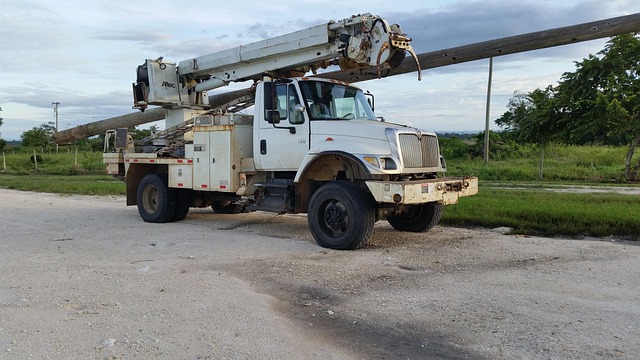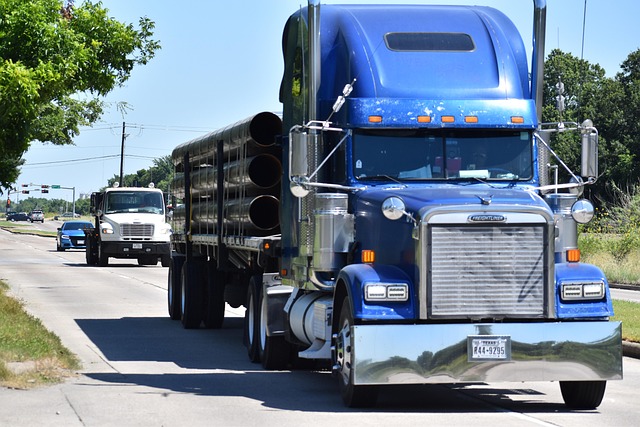Looking to register your car in California? This comprehensive guide walks you through every step, from gathering essential documents to completing the DMV VIN verification process. Understanding California’s vehicle registration requirements is key to a smooth transition. We’ll break down the process, ensuring you have all the necessary information and paperwork ready. By following these steps, you’ll be on your way to securing your vehicle’s registration with ease.
- Understanding the California Vehicle Registration Process
- Gathering Necessary Documents for Car Registration
- DMV VIN Verification: A Step-by-Step Guide
- Submitting Your Application and Paying Fees
- Receiving Your Vehicle Registration Papers
Understanding the California Vehicle Registration Process

Understanding the California Vehicle Registration Process
In California, registering a car involves several steps that ensure vehicle safety and roadworthiness. The process begins with a thorough DMV VIN verification to confirm the vehicle’s identity and history. This step is crucial as it helps determine if the car has been reported stolen, if there are any outstanding loans or liens, and to verify its overall condition. After passing the initial check, you can proceed with gathering essential documents such as proof of ownership, insurance, and identification.
The next phase involves a vin inspection, typically conducted at an authorized DMV location. This inspection includes verifying key components like the vehicle’s title, registration history, and any required emissions tests. For added convenience, some services offer mobile vin verification and mobile vin inspection, allowing you to complete these steps from the comfort of your home or office. Once all documents are in order and inspections are passed, you can finalize the registration by paying the necessary fees.
Gathering Necessary Documents for Car Registration

Before you begin the registration process, it’s crucial to gather all the essential documents. One critical step is to undergo a DMV VIN verification, which involves checking the vehicle’s unique identification number (VIN) against the manufacturer’s records. This ensures that your car is genuine and helps prevent fraud. For added convenience, many people opt for a mobile vin verification or vin inspection service that can perform this check on-site.
Among the documents you’ll need are proof of ownership, typically from a vehicle history report or a bill of sale; a valid driver’s license; and current insurance papers. Make sure these documents are up to date as they play a vital role in the registration process at the California DMV (Department of Motor Vehicles).
DMV VIN Verification: A Step-by-Step Guide

DMV VIN Verification: A Step-by-Step Guide
The first step in registering your car in California involves a crucial process known as DMV VIN verification. This ensures that the vehicle’s identification number (VIN) is accurate and matches the make, model, and year of your car. Here’s a breakdown of what you need to do:
1. Obtain Necessary Documents: Gather important paperwork, including your car’s title, registration certificate, and proof of insurance. Additionally, have the vehicle’s VIN readily available—you can find it on the driver’s side door frame or in the vehicle’s manual.
2. Choose a Verification Method: You can either visit a California DMV office for a manual inspection or utilize a mobile vin verifier for a quick and convenient vin inspection. If opting for a mobile vin verification, ensure the service provider is reputable to guarantee accuracy.
Submitting Your Application and Paying Fees

After completing your vehicle’s registration form, it’s time to submit your application and fees to the DMV. This process involves a few key steps. First, double-check that all required documents are included—this includes proof of insurance, identification, and any relevant receipts for fees paid. Once ready, mail or drop off your application at a local DMV office or, for added convenience, many services now offer mobile vin inspection options where an inspector will visit you to complete the vin verification process on-site.
You’ll also need to pay the necessary fees, which typically include a registration fee and a vehicle inspection fee. In California, these costs may vary based on your vehicle’s type and age. Ensure you have a valid method of payment readily available. After successful submission, the DMV will process your application, conduct a vin inspection (if required), and issue your official vehicle registration documents.
Receiving Your Vehicle Registration Papers

After submitting your registration application at the California DMV, you’ll receive your Vehicle Registration Papers. This document is crucial for your car’s legal operation on California roads. Before you can drive your new vehicle, ensure that all details are accurate and match the specifications of your car.
One important step in this process involves conducting a DMV VIN verification, which checks the accuracy of your vehicle identification number (VIN). You can perform this vin inspection manually by cross-referencing information from the registration documents and physical characteristics of your vehicle. Alternatively, many services offer mobile vin verification or mobile vin inspection options, allowing you to complete this step conveniently and often on-site during your registration visit.
Registering a car in California involves several steps, from gathering essential documents to completing the DMV VIN verification process. Once you’ve ensured all requirements are met, submitting your application and paying the necessary fees will secure your vehicle’s registration. Upon approval, you’ll receive your official vehicle registration papers, marking the successful conclusion of the process. Remember, a well-prepared DMV VIN verification can significantly streamline this procedure.
